Concept
CoCo seamlessly integrates with MS-Teams, enabling organizations to work in a decentralized network of projects while leveraging the accountability and decision-making functions of the organizational hierarchy in a transparent, simple, and time-efficient manner.
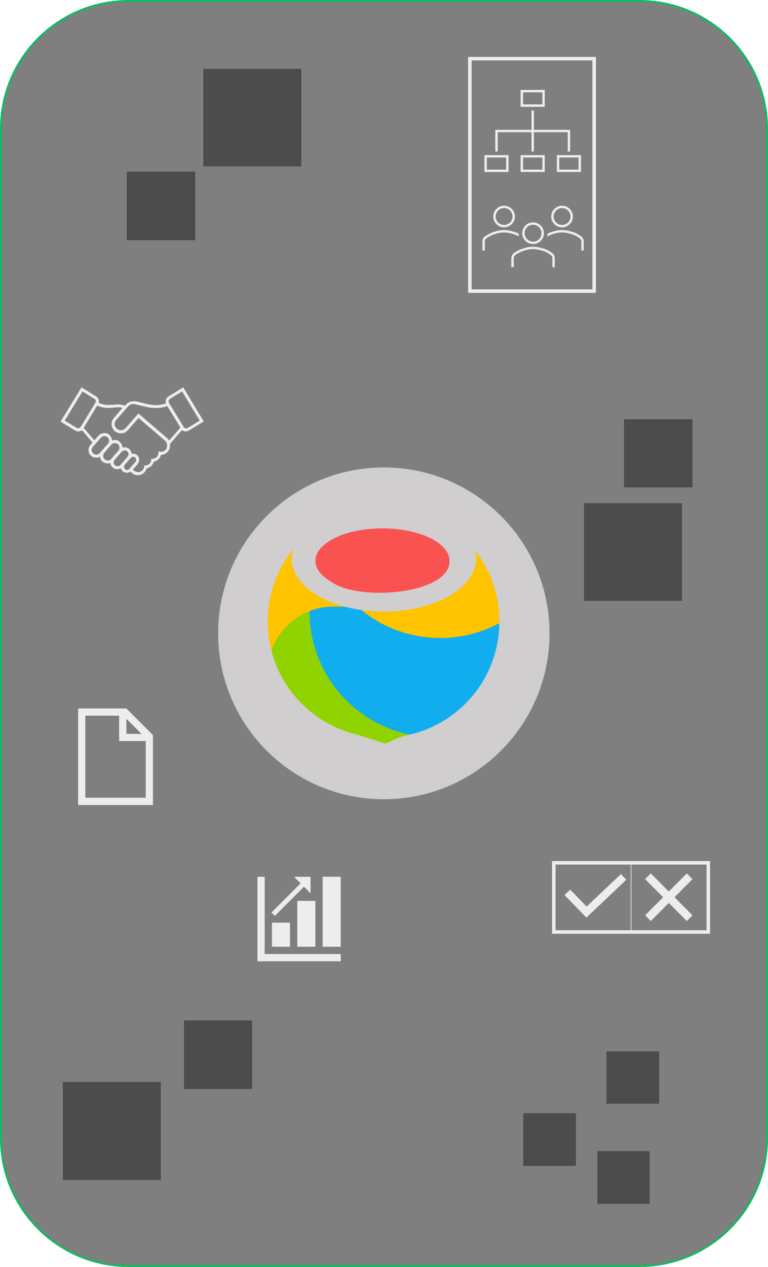
How CoCo Works
... and why it is needed now more than ever
At the beginning, you know everyone in your organization
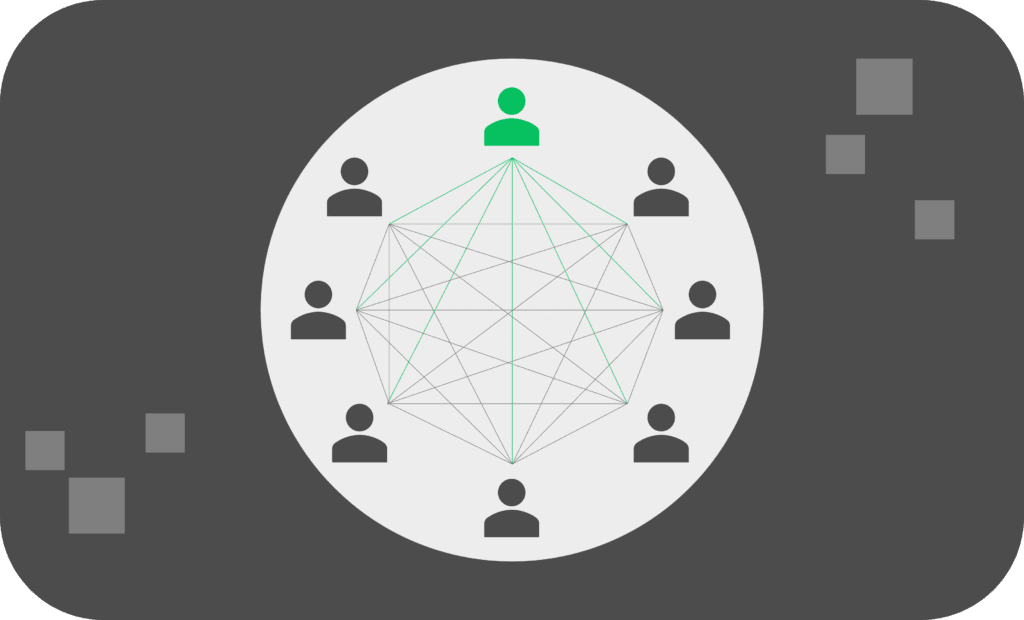
Every Organization typically starts at a point where everybody knows each other. Things work out, because you get what you need by directly being connected to the person who can provide it. That is called a social network and is always present when humans work together. Once the organization grows, however, you can no longer know everyone, so you must form hierarchies. Taking all kinds of shapes, hierarchies are the solid foundation of every organizational structure, as they manage the accountability inside an organization. In fact, forming hierarchies is a natural phenomenon for all animals that form groups, including humans.
Then you build hierarchies to manage growth
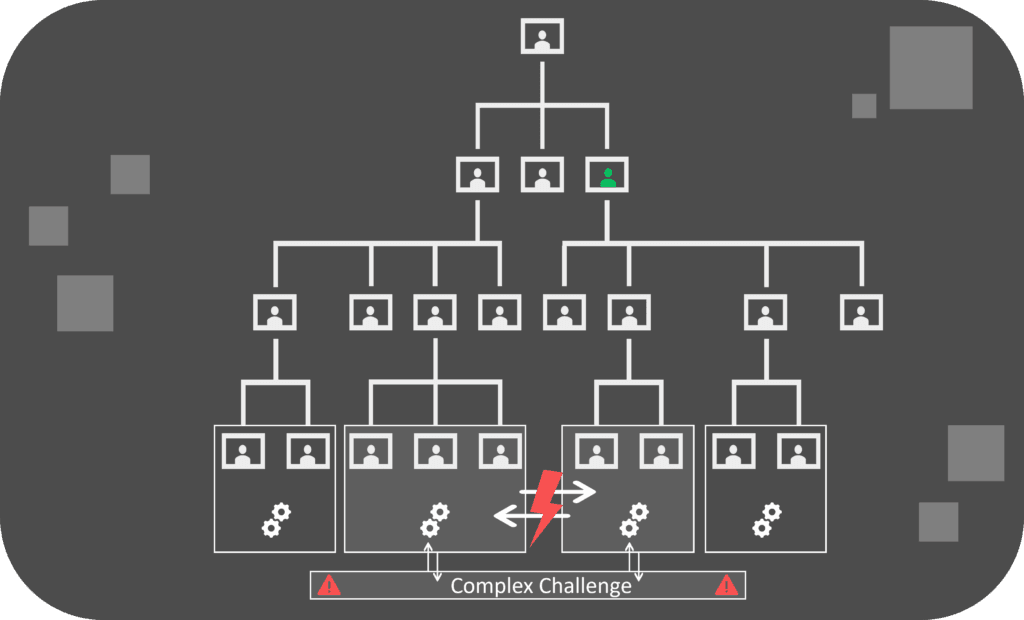
Applied in the business world, hierarchies enabled the optimization of process-driven production, especially during the industrial revolution. They work best when applied with simple or complicated processes like making a sandwich or building a car – both can be broken down and standardized into manageable steps. Nowadays environment, though, is one of complex problems. Doing research, developing, consulting – all falls under the modern term of VUCA (volatile, uncertain, complex and ambiguous). With such challenges at hand, hierarchies for organizing work reach their limits. They are made for accountability distribution, not for structuring complex work. Lately, some solutions suggested to abandon the hierarchy entirely. This would mean abandoning the accountability and in the last instance also the humanity of the organization. It is therefore not recommended.
Only cross-X projects can deal with complex challenges
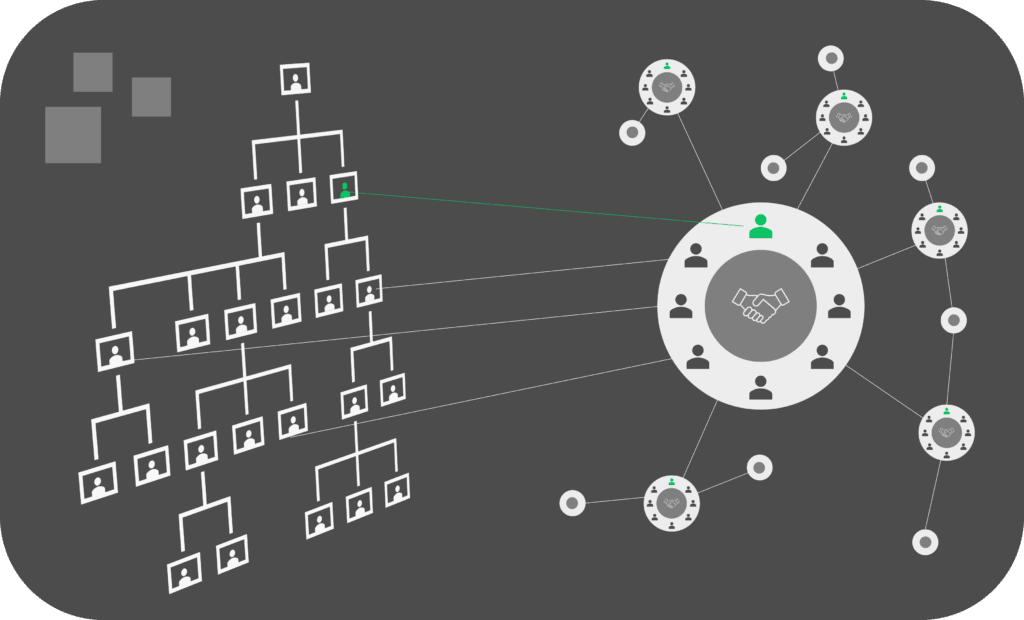
To encounter VUCA challenges, teams of experts are needed to provide both, specialization and diversity at the same time. What they form, is usually referred to as a project. Countless organizations have developed into project-based structures, intuitively approaching the complexity of modern day work challenges. Often, these project teams are formed not only from one area of the hierarchy, but from all across it, to ensure a broader range of specialization. These groups are then called cross-functional, cross-divisional or simply cross-X projects. Together, they form a value-creation network, combining highly specialized skills and knowledge on a range necessary to meet each projects‘ challenges. Often this is referred to as decentralization.
Lost of oversight increases reporting, efficiency loss, and distrust

The imminent problem resulting from this structure is the loss of control and oversight. The hierarchy is broken, since not all team members share the same line manager. Even more critically, those who invested resources into the project that is formally not in their line of hierarchy become detached from their accountability. Decentralization of work is not seldom feared or actively sabotaged in an attempt to stay in control. The most common phenomena is a steady rising in demand for reports due to a lack of transparency within the system, inevitably reducing efficiency and productivity as well as slowly fueling distrust inside the organization. Distrust leads to more demand for documentation and reporting, leading to even more inertia. A vicious circle to be seen in many organizations.
Transparency and accountability are the foundations of trust

CoCo approaches this problem in a novel and unique way, to combine the benefits of decentralization and clear accountability of the hierarchy. By enhancing transparency of team membership and responsibilities within the teams, accountability is enforced which leads to efficiency and finally to a growing of trust within the organization.
So how does it work? Let’s have a look.
The key DNA of projects is responsibility assignment
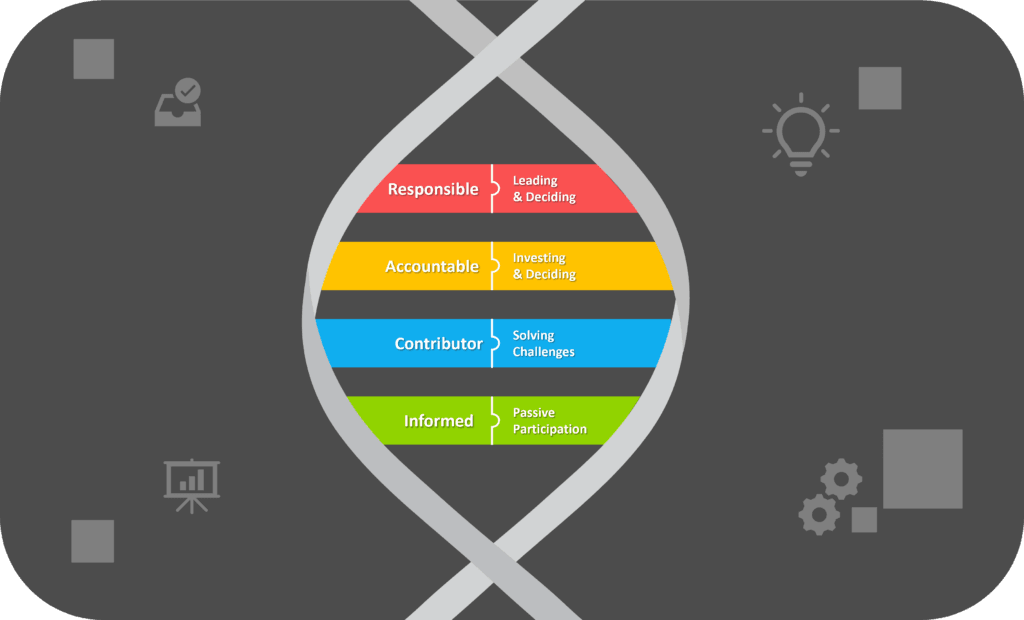
At first, we take a look at Projects. At core, all projects consist of a team. The responsibility assignment of every team can always be divided into four different roles:
Responsible
Responsible: Leader & manager of the project, authority for decision making
Accountable
Accountable: Active resource givers, compliance drivers, seniors of the organization from involved divisions
Contributor
Contributor: Active solution finder for complex challenges, creative input giver, driving force to get the job done
Informed
Informed: Passive team members to be informed about the project’s progress
Four generic roles to be applied in every possible context are the core of CoCo’s team management. When using CoCo, you gain the transparency to always know what projects you are responsible or accountable for, thanks to practical consolidation overviews.
Effective projects need guidance by clear goals & decisions on risks
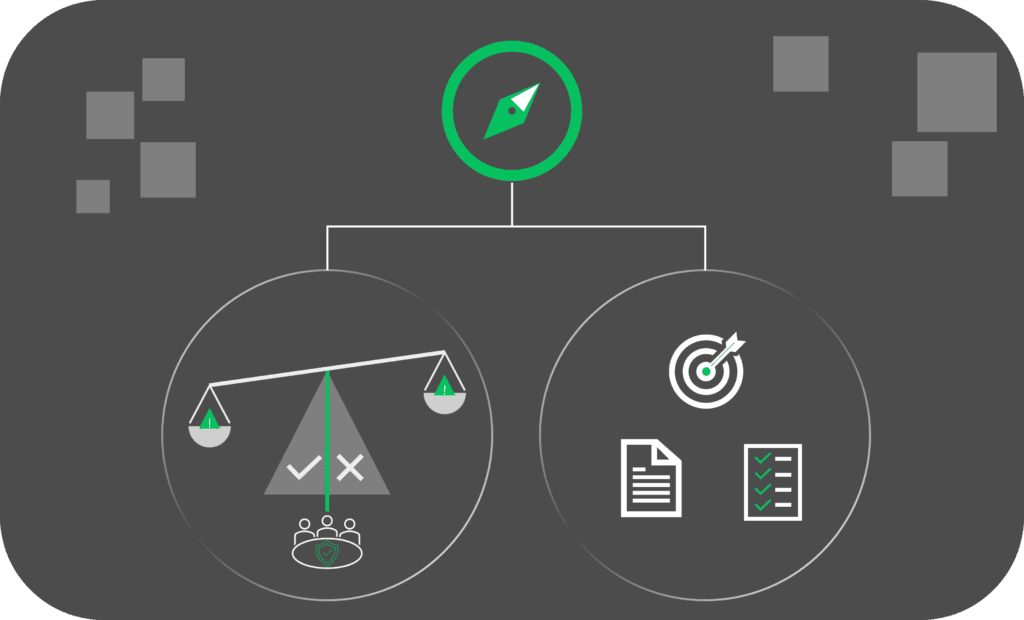
To be efficient, projects also need clear guidance. Coco offers three functionalities for better transparency:
- A space to document the project’s goal and additional information
- An area to record and prioritize risks
- An intuitive process to make and document decisions, utilizing the same role structure as on the projects.
In combination with the functionalities of MS Teams, like file storage, task assignment, calendar, call function, and a group chat, all requirements for a healthy project infrastructure are fulfilled.
Accountability beyond direct direct involvement requires visibility

The last ingredient is about how real accountability utilizes the hierarchy to boost trust with transparency. Accountability means responsibility for the outcome of a project. When you invest resources into a project, you become an accountable stakeholder. However, accountability doesn’t stop with you; it extends upward through the hierarchy. Therefore, when someone is accountable for a project, their line manager shares that accountability. In fact, the entire chain of line managers is accountable for the project’s outcome. They should, at a minimum, have visibility into the project, rather than relying solely on delayed reports and observing the outcomes only.
CoCo embeds real & transparent accountability in all projects
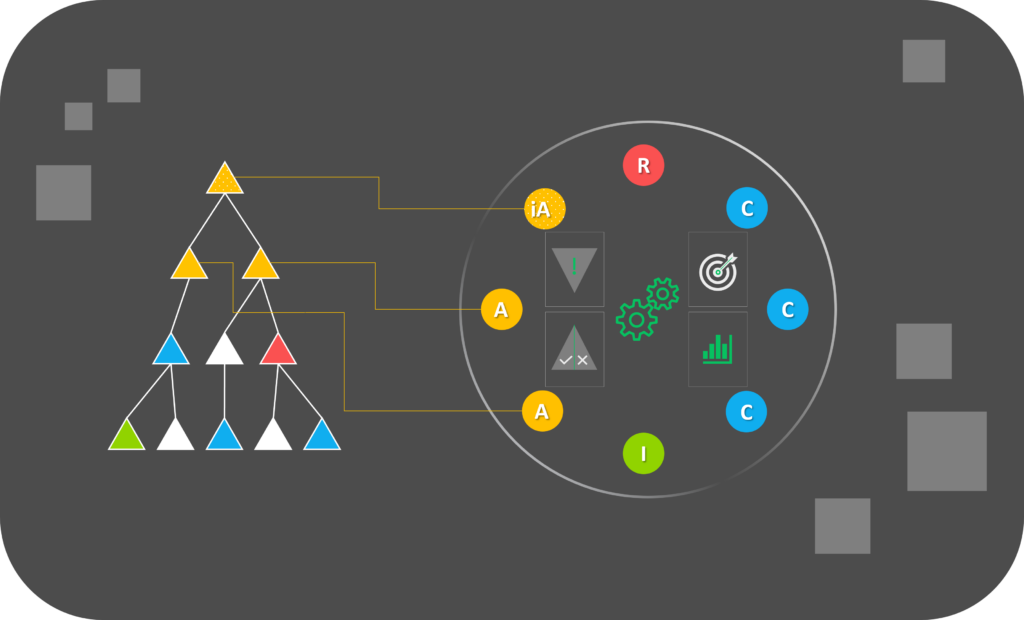
At CoCo, the line manager tree of the Responsible and all Accountables gain the fifth role on the project called inherited Accountable, ensuring transparency and compliance with their guidance – hence the name: Compliant Collaboration.
Real Accountability, transparency, and simplicity of usage lead to more trust and efficiency for all organizations that operate (remotely) with complex challenges.
„Accountability is human. CoCo brings the human factor back into decentralized and remote work environments“
– Lukas Kutscher (Founder)
Trust in Simplicity is our Vision
Coco is at first glance a project management tool, as it provides three major functions in a simple and user friendly way: Team-management, risk-management and decision-management. By being implemented at the place where most work coordination happens – MS teams – it further streamlines the organization of work. On second glance, CoCo offers additional value by leveraging an existing hierarchy to enhance compliance through transparent accountability within every project. As a result, trust grows while the effort and time spent on non-value creating activities are reduced, generating a surplus of time that can be utilized to create more value or dedicate to whatever matters most to you.
Role-Based Responsibility Assignment
Clarity of responsibility in every project to generate a real picture of accountability across the organization
Decision and Risk Management
Transparent and guiding decision making, based on risks in the context of work
Trust with real & transparent Accountability
Accountability is displayed on every project and provides access based on given organizational hierarchy
What CoCo looks like
As a PowerApp, CoCo is fully integrated in Microsoft Teams
Home Tab
Embedded in Microsoft Teams, the home tab consolidates all information abouth the projects related to this team, yet can be switched to summarize all projects organization wide.
Project Overview
Consolidates all your active projects with the option to show projects that you are indirectly accountable for.
Decision Overview
Shows all active decisions with status and on demand closed decisions with “my vote vs outcome” comparison.
CoCo Feed
Consolidated feed/ updates of all projects and decisions within this team, you have an active role on.
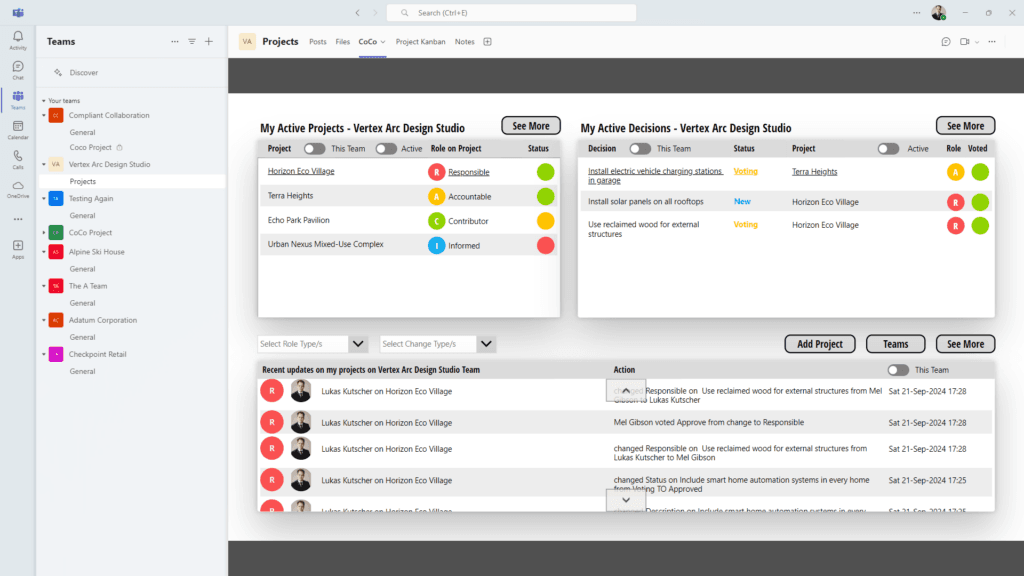

Project View
The Project page summarizes relevant information, including the target, the team responsibilities, and critical decisions as guidance for the project. It also includes direct links to the project’s risks and the feed which records the action history on the project.
General Project Information
Documents name and project relevant information in a central location as guidance for the team, including images, goals, KPIs, and more.
Project Status & Stage
Visible in consolidated view for overview your own projects and those in your accountability.
Project Team
Structure and organize the project team with assigned responsibility and flexibility.
Decisions
Create and manage decisions transparently as guidance for the whole team, yet enough secrecy in the voting process.
Decision View
The decision process becomes streamlined and documented for clarity and guidance
Decision Content
Describe what the decision is about, it’s potential implication & relevant input, which is not stated on the project. Formulate as a Y/N question.
Decision Team
Select a team of approvers to vote on the decision for documented alignment & approval. Once closed, votes cannot be changed or deleted.
Decision Process Control
As Responsible, you guide the decision, start the voting and close it through a final decision. The outcome is transparent to the whole project.
Decision Feed
All changes on description and status, as well as votes are documented in the decision feed for additional transparency.
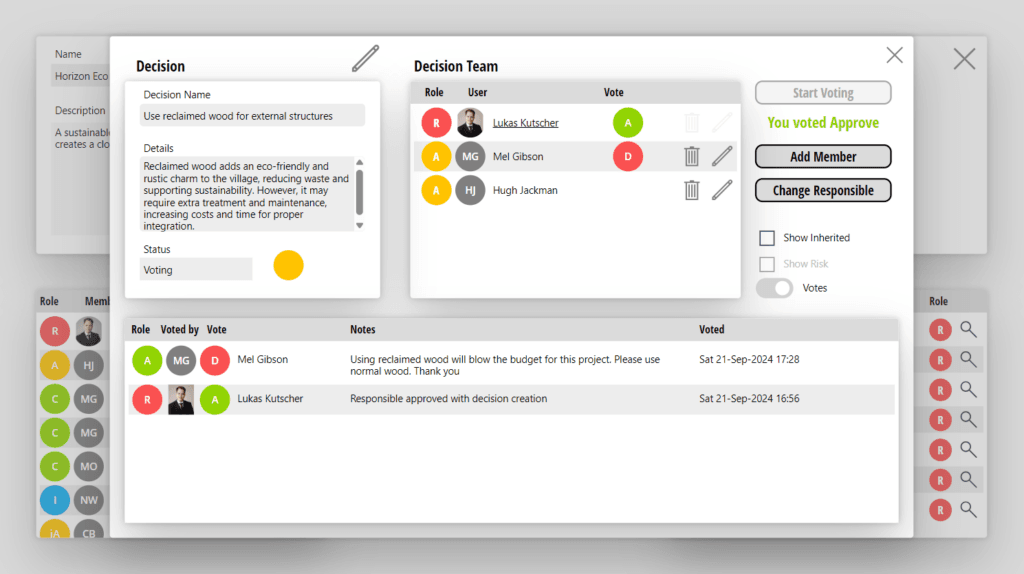
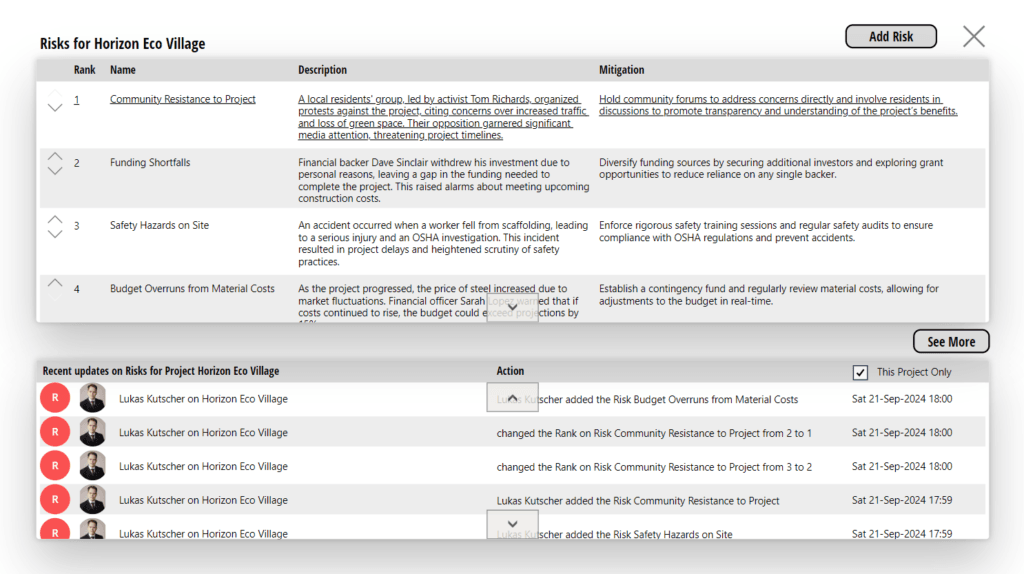
Risks View
Risks are recorded in relation to work on every project with documented mitigation strategies. They can also be linked to decisions.
Risks
Document risks in context of work and decisions, easily manageable in an ordered list.
Project Feed
All changes on the project’s risks are documented in this table. A complete feed for all changes is located on the project page.
CoCo in a Nutshell
CoCo aims to enhance trust and efficiency by streamlining project governance and making hierarchy-wide accountability transparent. It serves as a guiding framework for project-organizations, while seamlessly integrating with Microsoft Teams.
